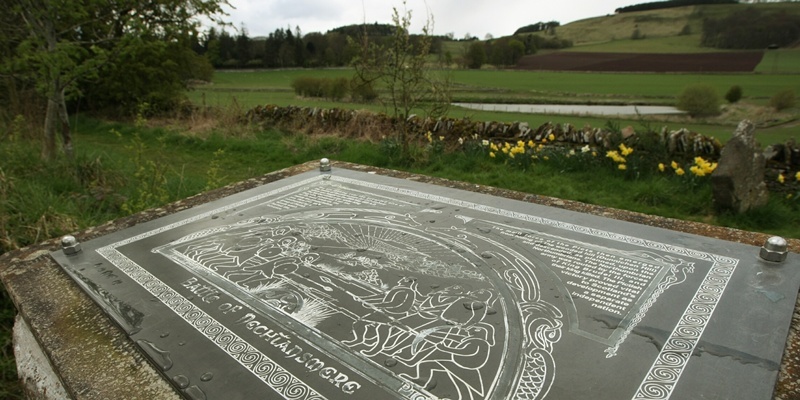A modern-day quest has been mounted to find evidence of the exact site of one of the nation’s most significant ancient battles.
”Only 50 years after the battle, Pictland was considered a single kingdom, covering all of mainland Scotland North of the Forth and Clyde valleys, with the sole exception of the Kingdom of Dal Riata in the west.
”Conversely, the battle was a devastating blow to the Northumbrians, and marked the beginning of the end for the imperium of Northumbria.”
Ms Owen added: ”Our difficulty lies in locating the battlefield in the modern landscape with sufficient confidence to allow it to be included in the inventory. Accurate location is one of the key criteria for inclusion.”
Ms Owen continued: ”Dun Nechtain is one of the earliest battles we have considered and, in common with other early battles, there is no physical evidence of the battlefield and very limited historical information to go on.
”We know there is a huge amount of support locally for the traditional site of the battle in Angus to be recognised in the inventory, and I hope that many of the people who have contacted us about this site in the past will be able to join us and perhaps reveal local sources of information that could help us with the research.
”We are delighted that Dr Iain Banks of The Centre for Battlefield Archaeology, which has carried out the research for us, will be able to join us to talk through their findings.”
Dr Banks said: ”We recognise the tremendous historical significance of the Battle of Dun Nechtain. This meeting is an important opportunity for people to offer us any further information or insights that we may have missed so far. We are keen to see any evidence that will inform our findings.”
Consultation on the next group of sites proposed for inclusion in the inventory will begin shortly and run until the end of June.
Historic Scotland has said that to be included in the inventory a battlefield site must be considered nationally important for its contribution to Scotland’s history and archaeology, and it must also be possible to provide a map of its location based on robust evidence.
Physical remains and the landscape context are taken into account and the boundaries of battlefields must be recorded on a modern map to allow them to be protected through the planning system.
The 685AD Battle of Nechtansmere, or Dun Nechtain, is widely regarded as a pivotal point in Scots history but the Pictish victory over an invading Northumbrian army is in danger of being left off a list of the country’s most important battlegrounds if experts cannot define the specific piece of Angus land where the warriors clashed.
Now Historic Scotland is turning to the Angus public in a quest for information on the battlefield near Forfar.
There is already disappointment that Dun Nechtain, fought over the area around the hamlet of Dunnichen between Forfar and Letham, did not feature in the two previous announcements of battlefield sites which made the important list.
The schedule features almost 30 of Scotland’s most important sites, including Culloden and Bannockburn. But contenders must meet strict criteria and Historic Scotland experts are hopeful local knowledge will help secure Dun Nechtain’s place on the historic record.
The battle marked a turning point in early Scottish history, when the Picts defeated a strong Northumbrian army, allowing the victors to expand their authority and become the dominant nation in Northern Britain.
Historic Scotland has funded research to try to establish the location of the battlefield and is now set to present its findings at the public event in Forfar’s Reid Hall on Thursday May 10 when officials and experts from the Centre for Battlefield Archaeology will lead a discussion on the results of the research.
Olwyn Owen, head of the Historic Scotland team responsible for battlefields, said: ”Dun Nechtain was an important battle because it changed the balance of power within Scotland at the time. The victory of Fortriu not only secured their own autonomy from Northumbria, it also allowed Bridei to expand his authority over the many smaller Pictish kingdoms of Scotland.”
Continued…
